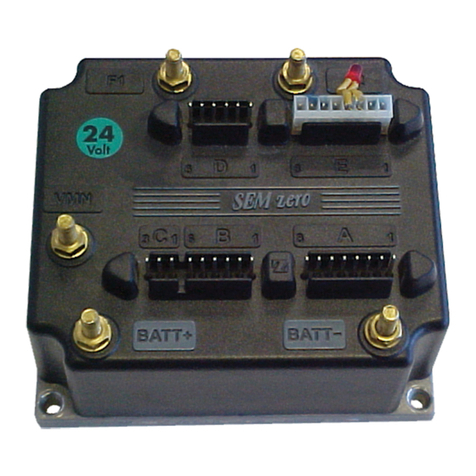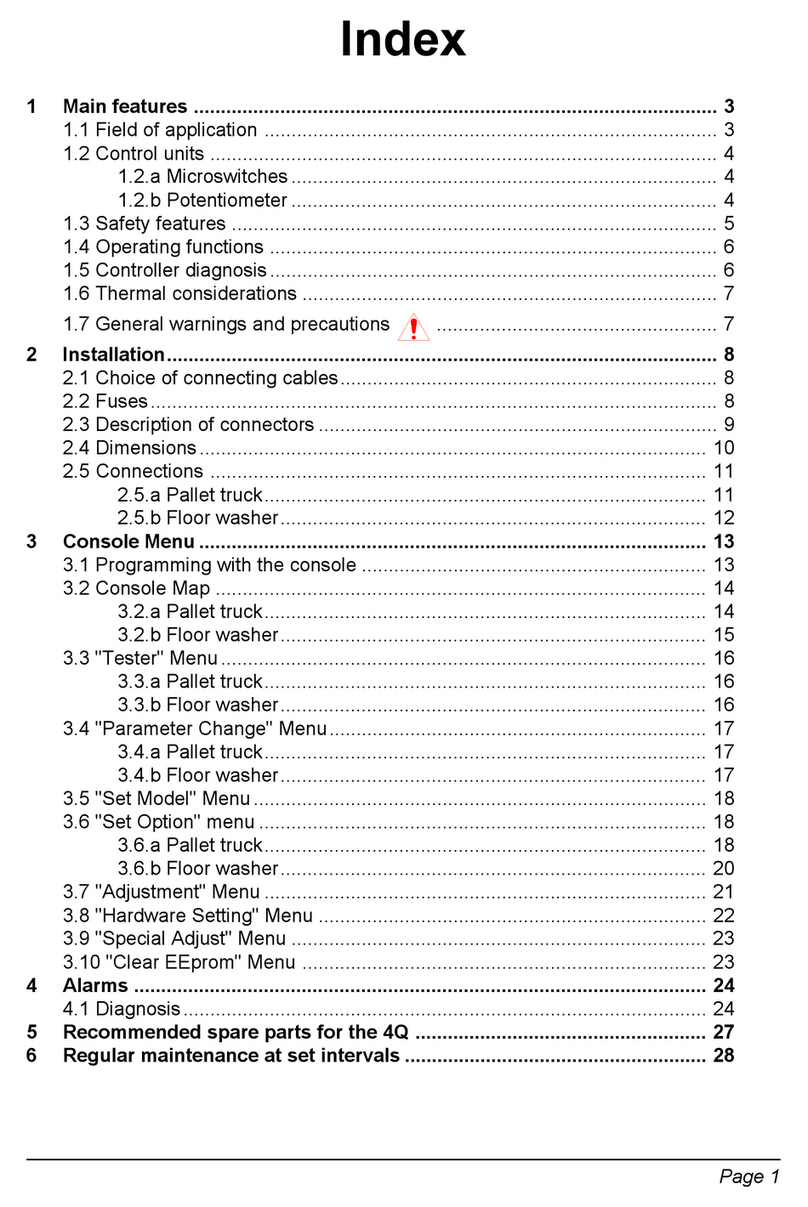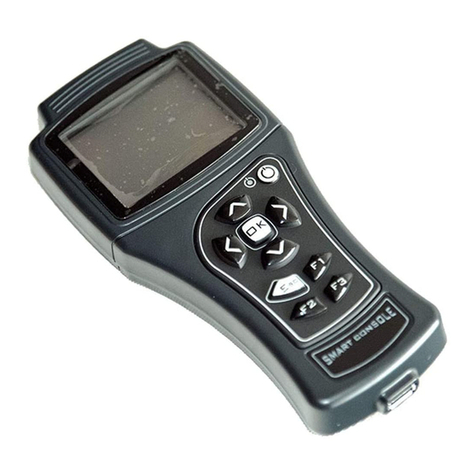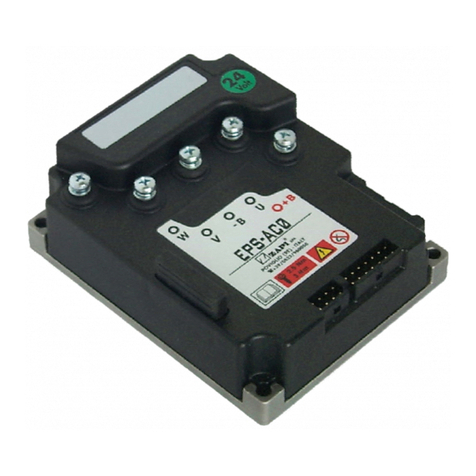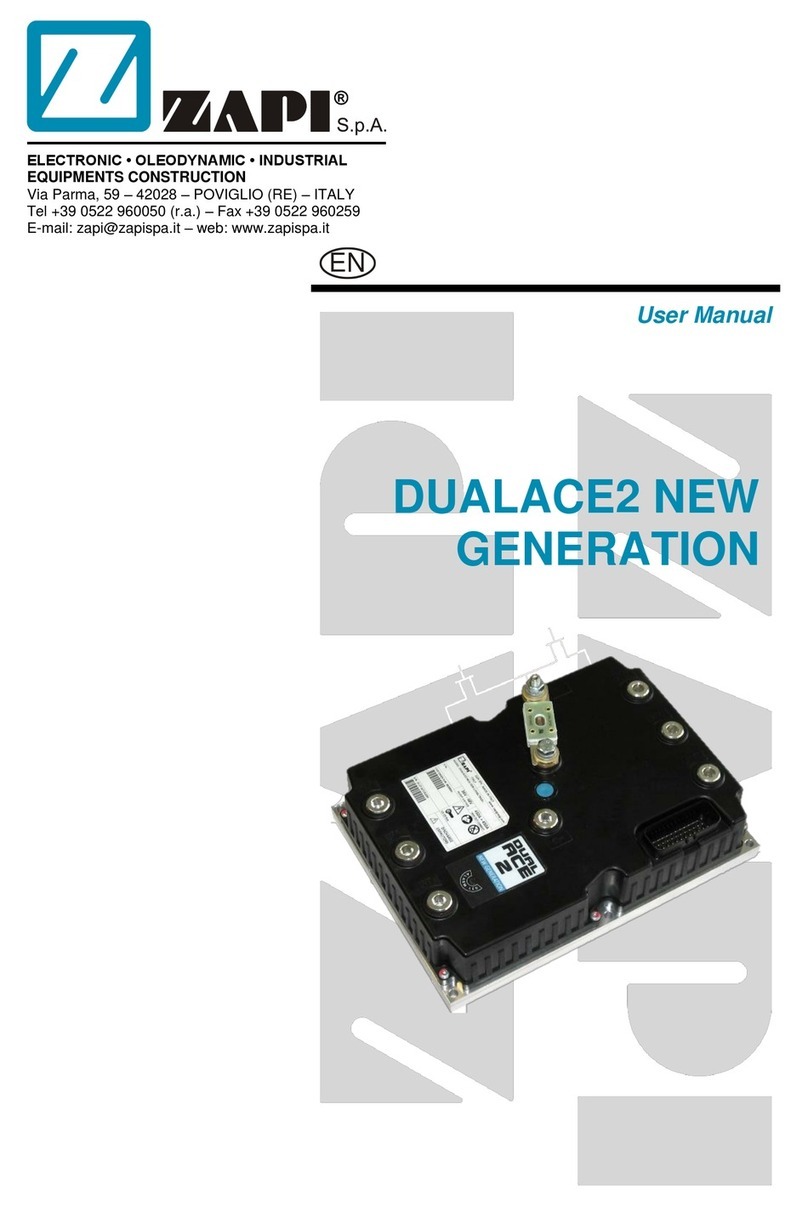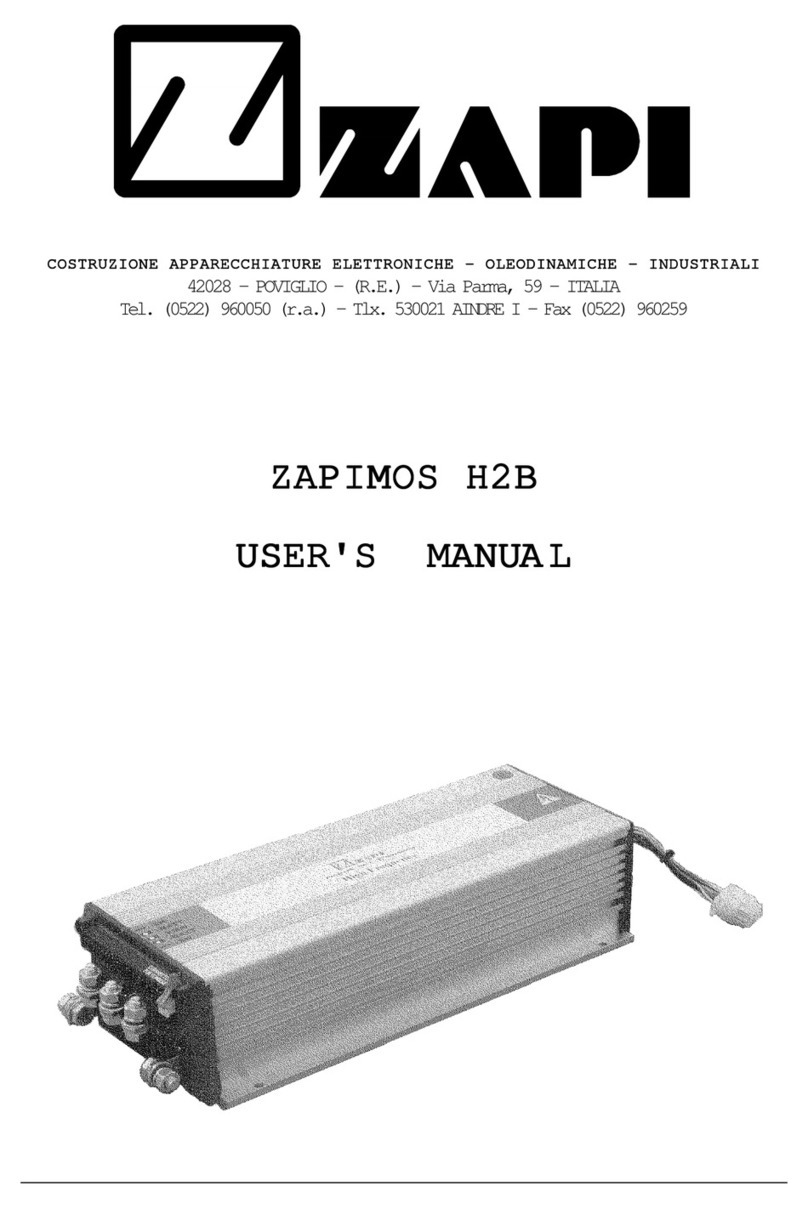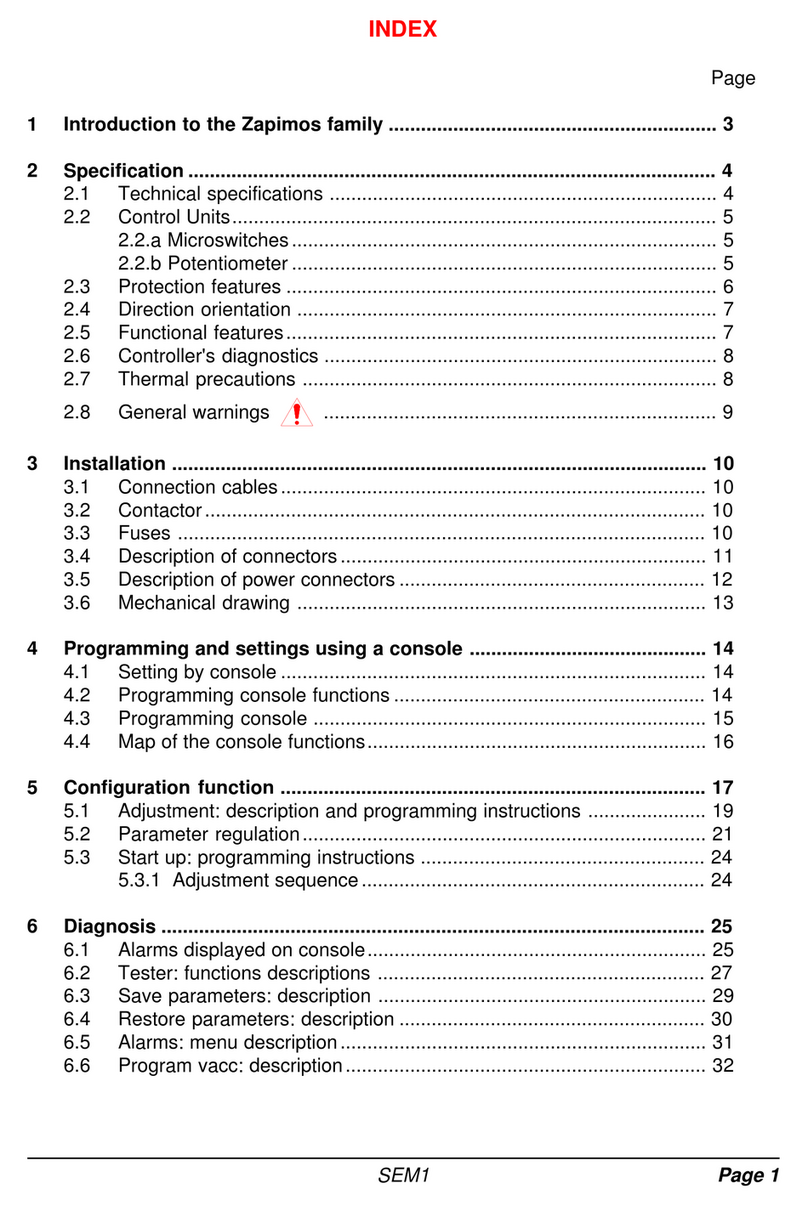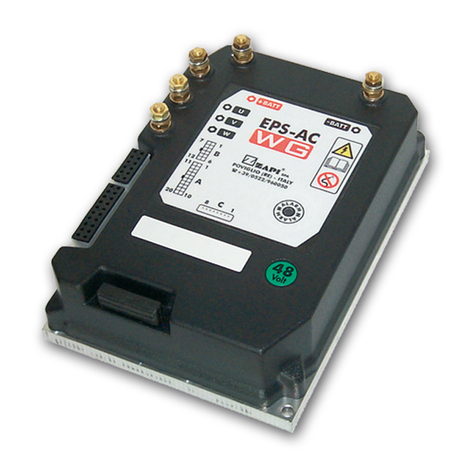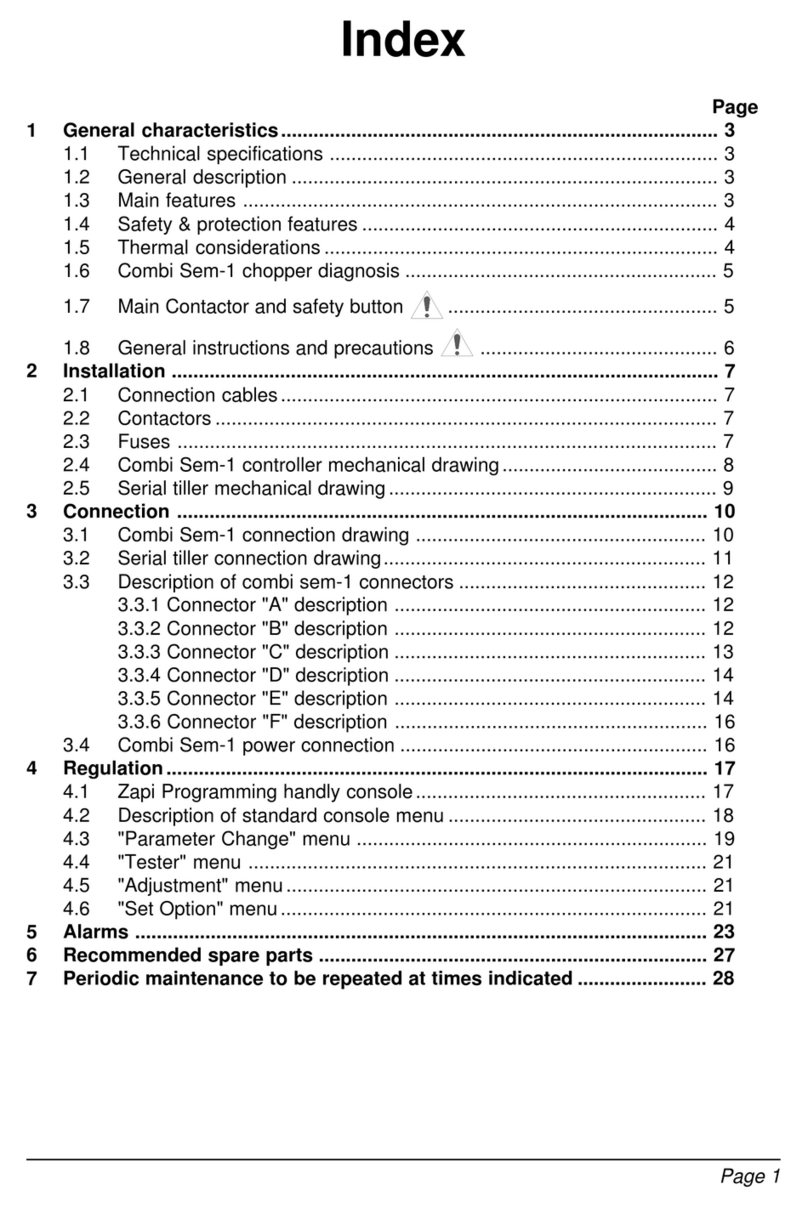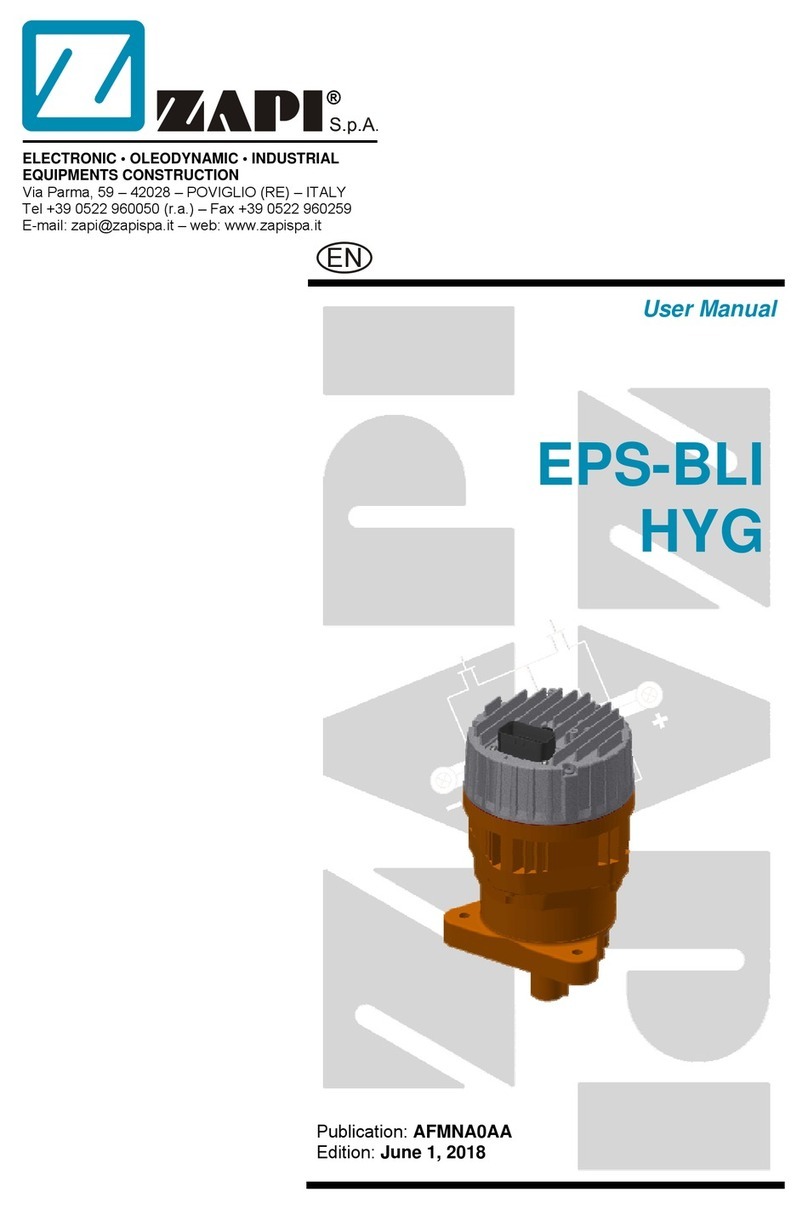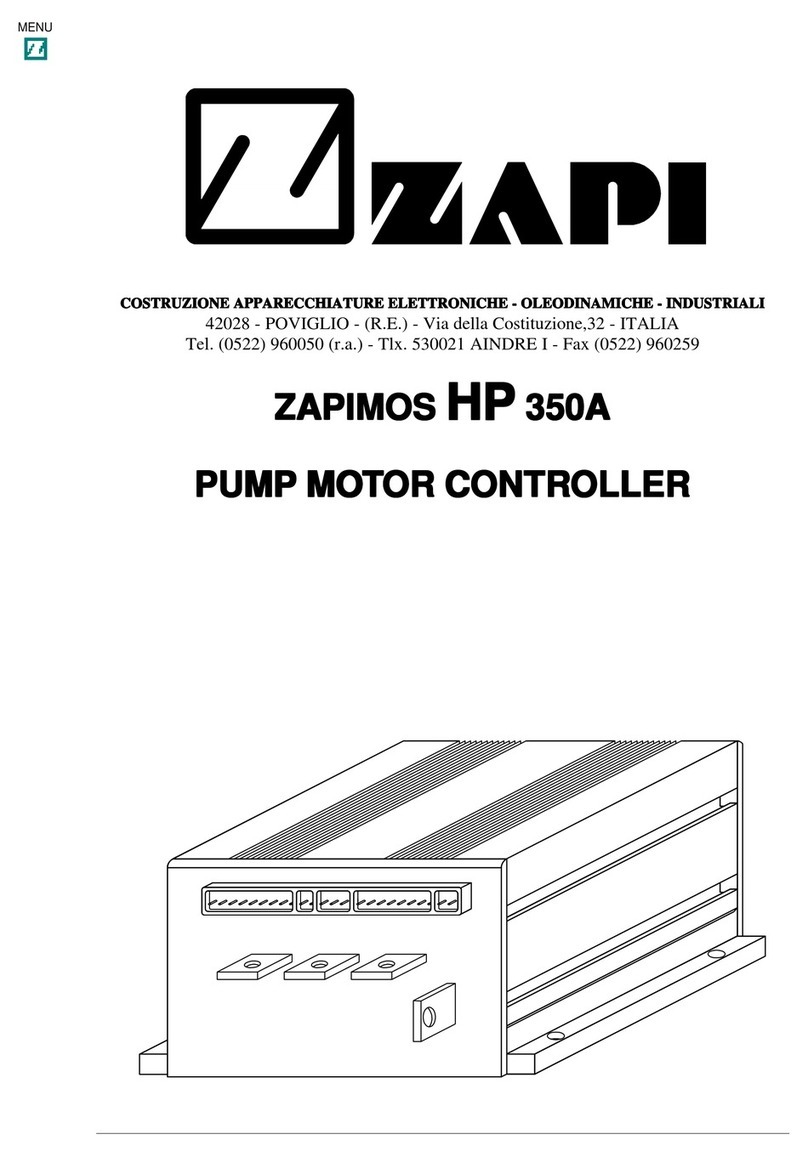
ADPZP0CC - MHYRIO FLASH CONTROLLER - User Manual Page - 3/36
Contents
1INTRODUCTION TO ZAPI CAN SYSTEM............................................................................5
2GENERAL CHARACTERISTIC ............................................................................................6
2.1 Functional characteristics ...........................................................................................6
2.2 Input............................................................................................................................6
3INSTALLATION HINTS.........................................................................................................7
3.1 Material overview........................................................................................................7
3.1.1 Connection cables ........................................................................................7
3.1.2 Fuses............................................................................................................7
3.2 Installation of the hardware.........................................................................................7
3.2.1 Wirings: CAN connections and possible interferences.................................8
3.2.2 Wirings: I/O connections.............................................................................10
3.2.3 Insulation of truck frame..............................................................................10
3.3 Protection and safety features..................................................................................10
3.3.1 Protection features......................................................................................10
3.3.2 Safety Features...........................................................................................11
3.4 EMC..........................................................................................................................11
4OPERATIONAL FEATURES ..............................................................................................14
5DESCRIPTION OF THE CONNECTORS............................................................................15
5.1 Connector CNA: ZAPI Minifit 22 poles......................................................................15
5.2 Connector CNB: ZAPI Minifit 6 poles........................................................................15
5.3 Connector CNC: ZAPI Minifit 6 poles .......................................................................15
5.4 Connector CND: ZAPI Minifit 4 poles .......................................................................16
5.5 Connector CNE: ZAPI Minifit 8 poles........................................................................16
5.6 Connector CNF: ZAPI Minifit 10 poles......................................................................16
5.7 Connector CNG: ZAPI Minifit 16 poles .....................................................................17
6DRAWINGS.........................................................................................................................18
6.1 Mechanical drawing..................................................................................................18
6.2 Functional drawing....................................................................................................19
7PROGRAMMING & ADJUSTMENTS USING DIGITAL CONSOLE...................................20
7.1 Adjustments via console...........................................................................................20
7.2 Description of console and connection.....................................................................20
7.3 Description of standard console menu .....................................................................21
7.4 Description of programmable functions (options) .....................................................22
7.5 Description of parameters that may be programmed (parameter change)...............24
7.6 Adjustments table .....................................................................................................25
7.7 Description of the tester function ..............................................................................27
7.8 Description of the console save function..................................................................30
7.9 Description of the console restore function...............................................................30
7.10 Description of the set model Function ......................................................................31
7.11 Description of alarms menu......................................................................................33
8CONTROLLER DIAGNOSTIC ............................................................................................34
8.1 Analysis of alarms displayed on the console............................................................34
9RECOMMENDED SPARE PARTS FOR CONTROLLER...................................................35
10 PERIODIC MAINTENANCE TO BE REPEATED AT TIMES INDICATED.........................36
